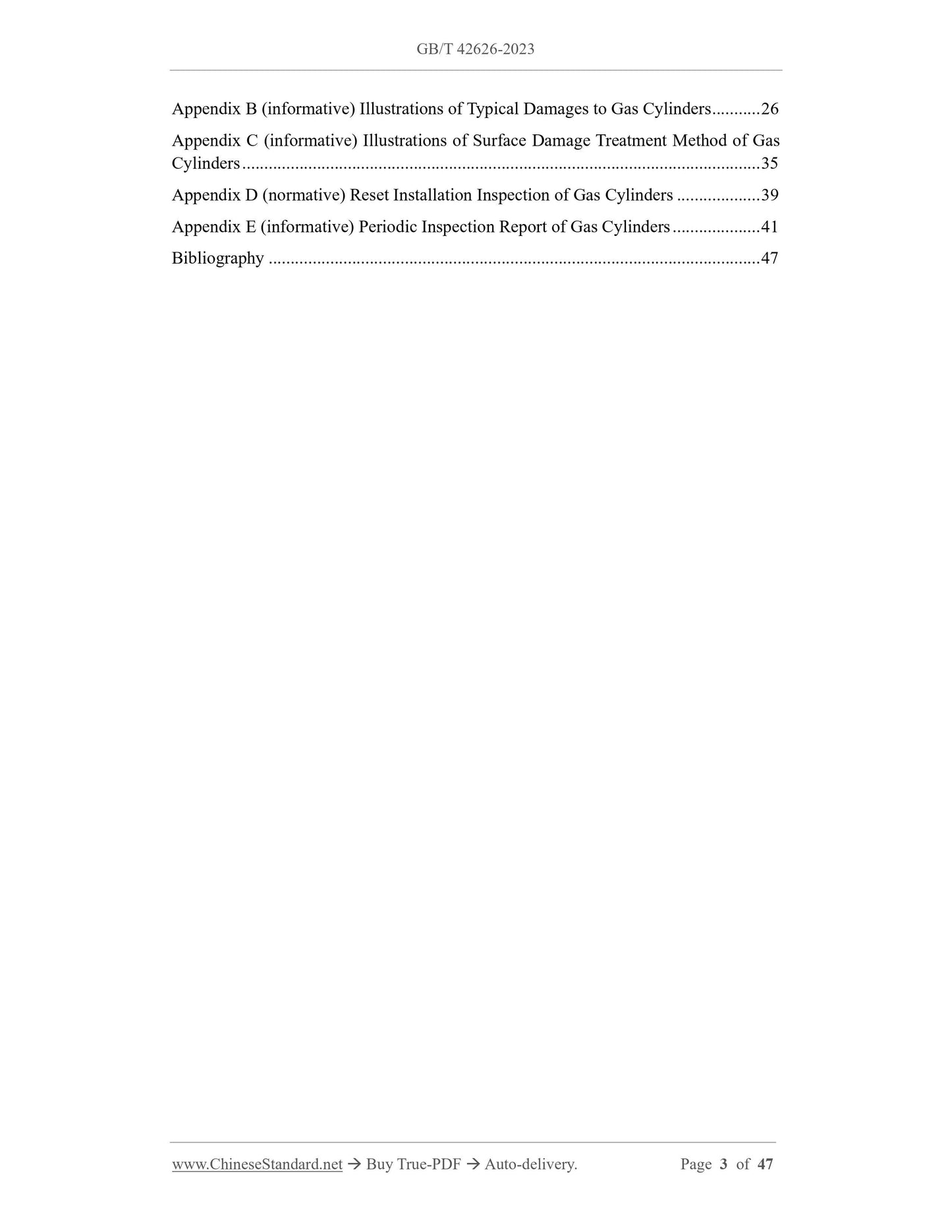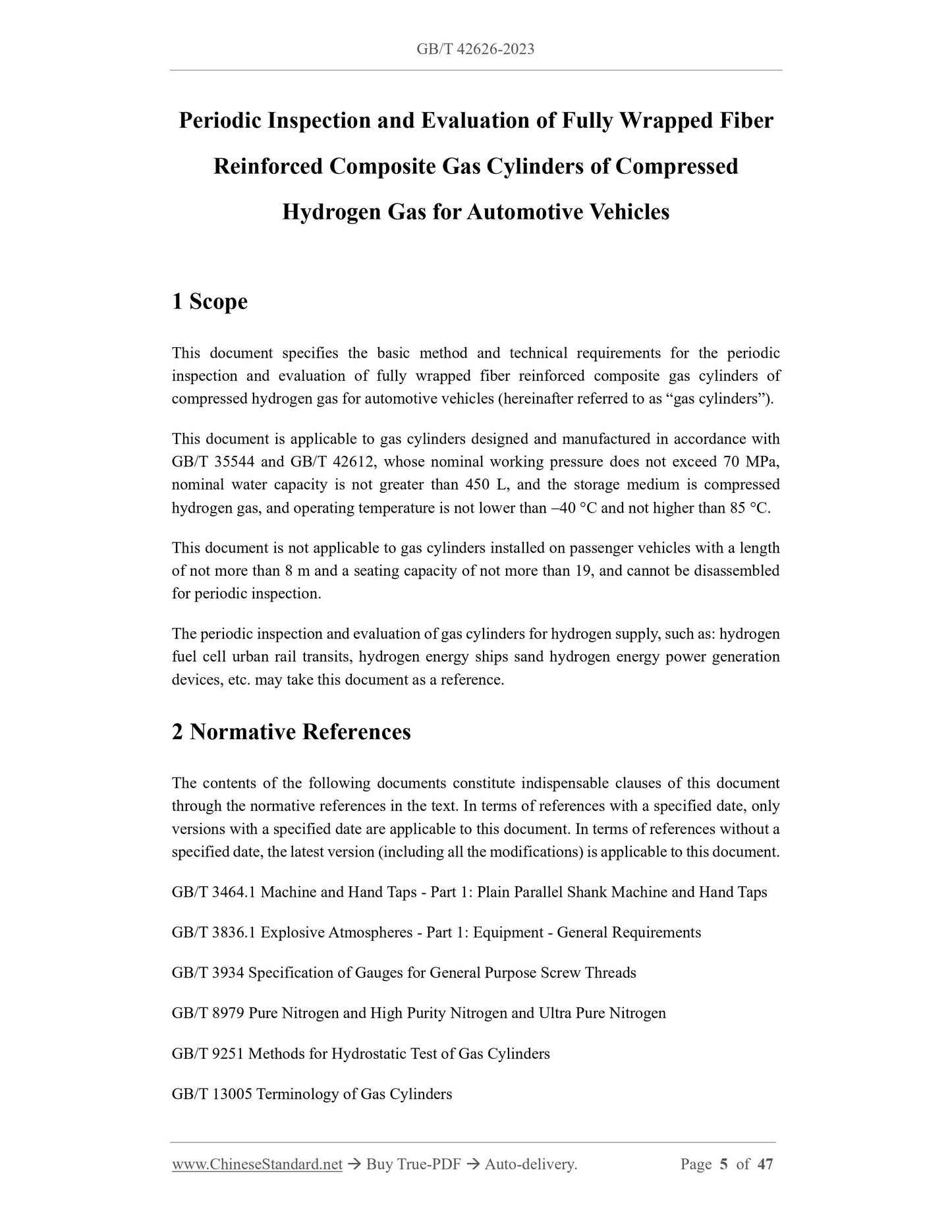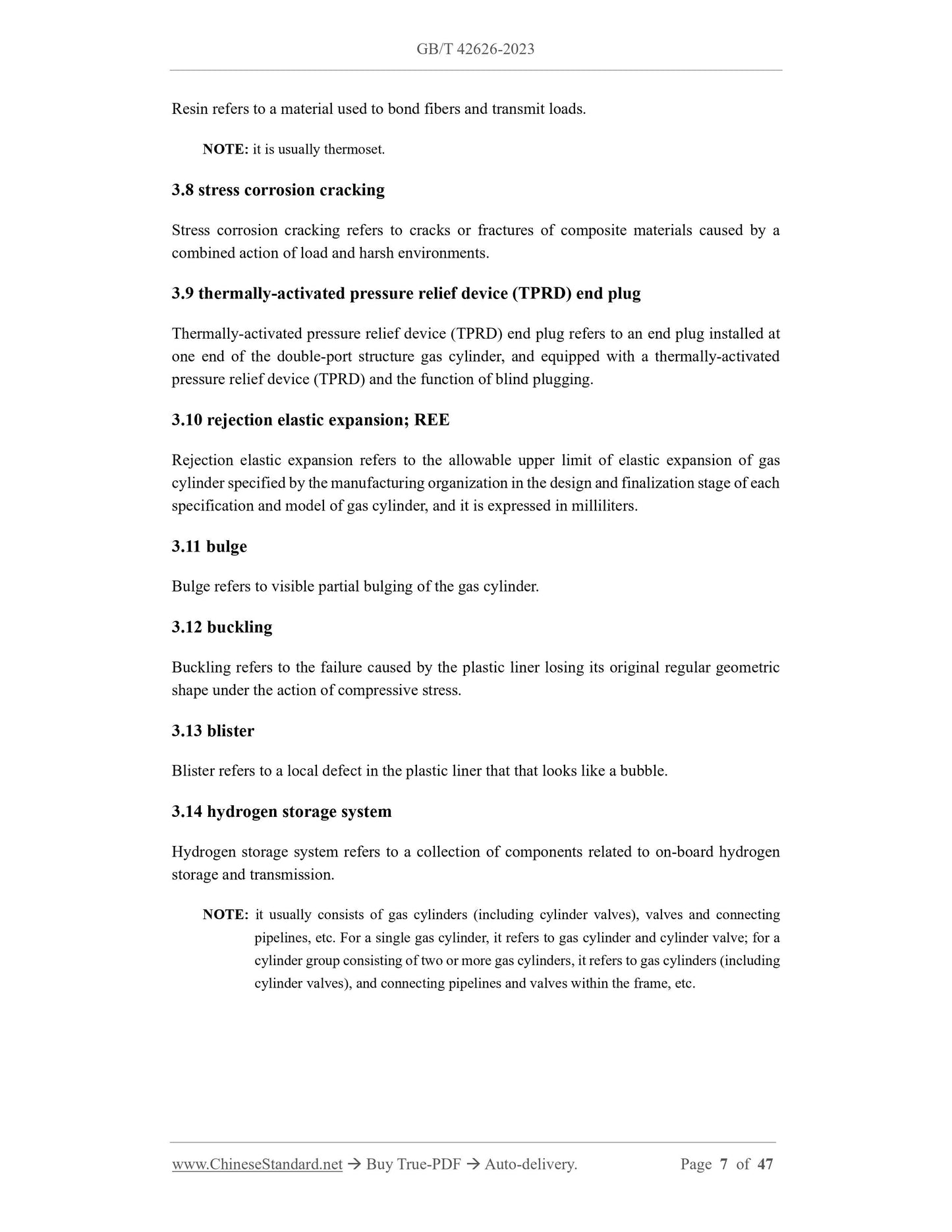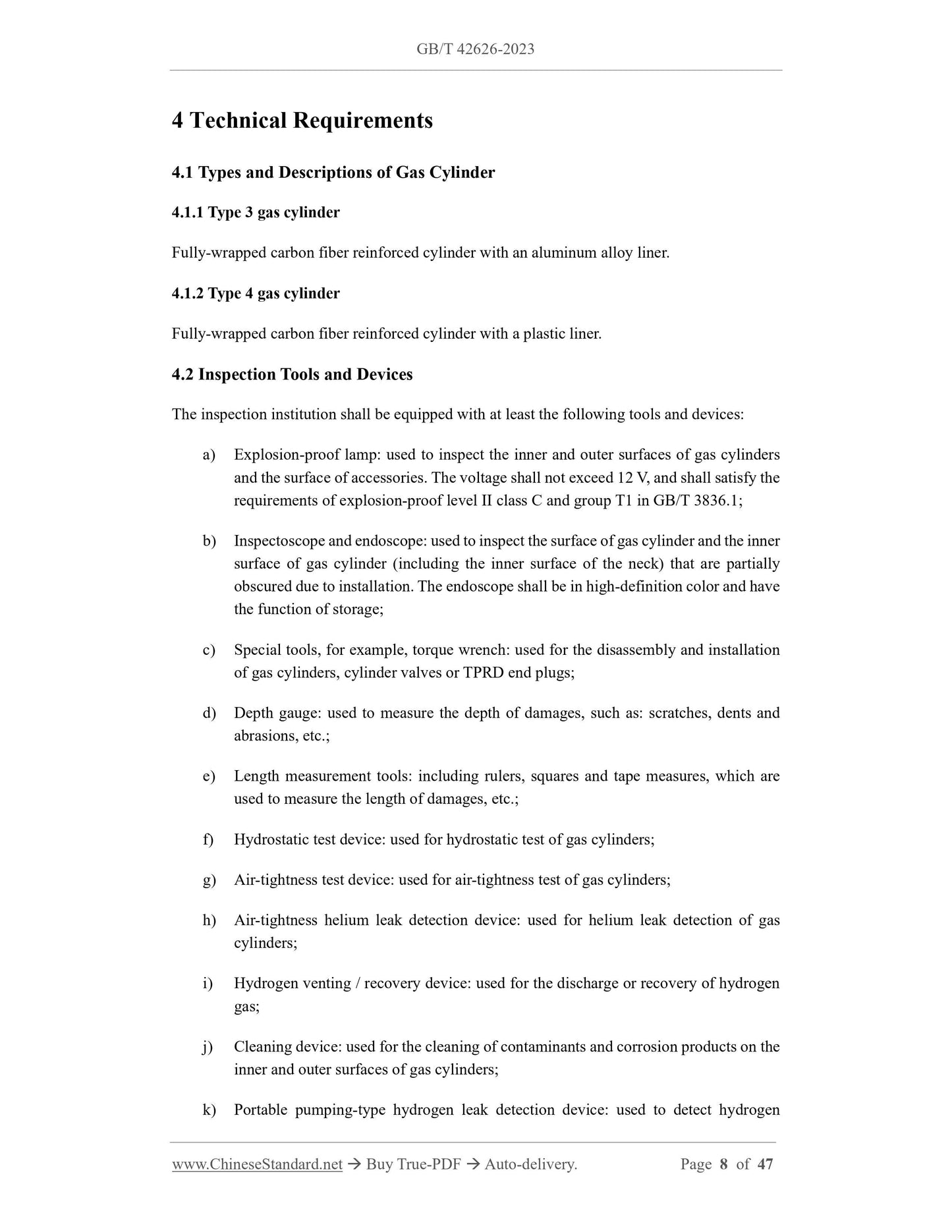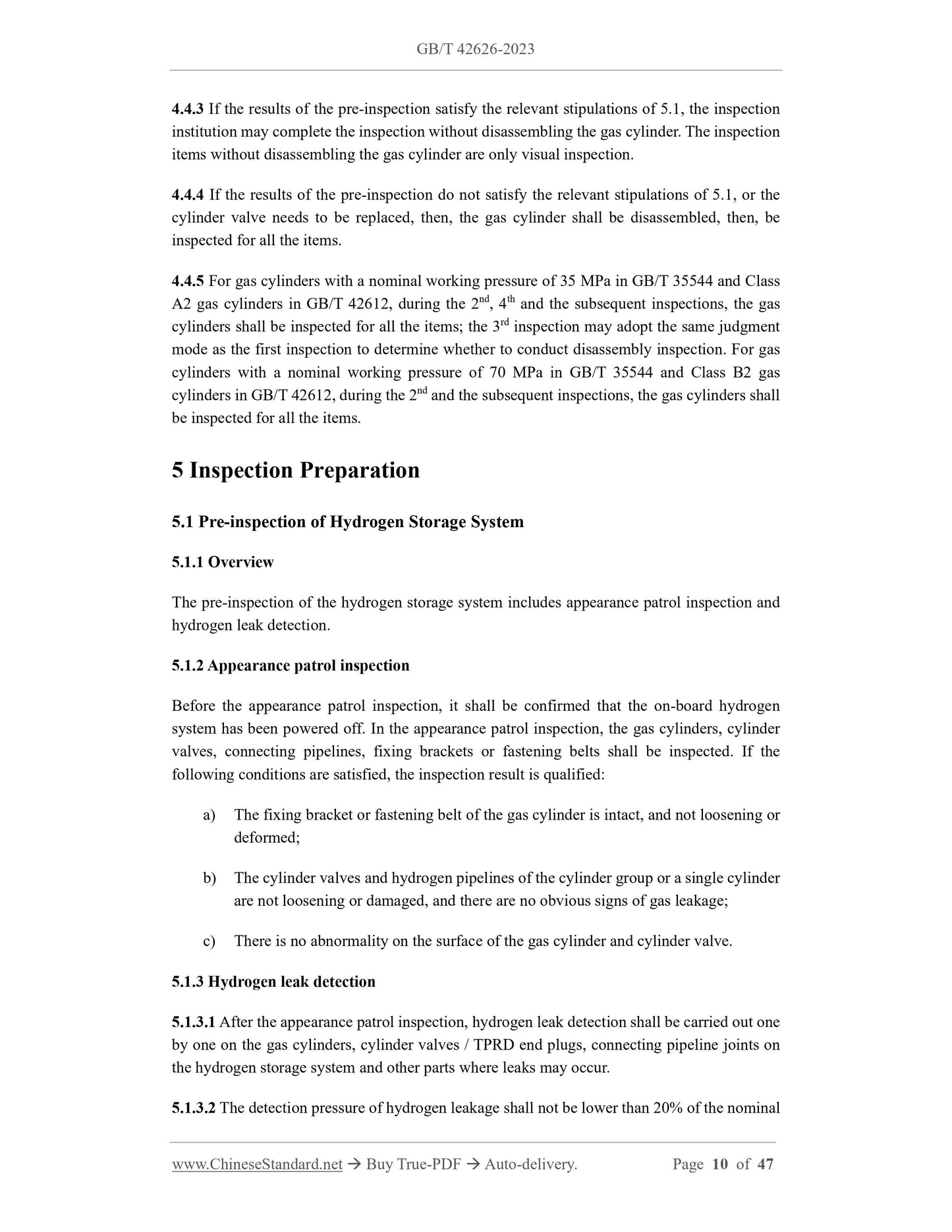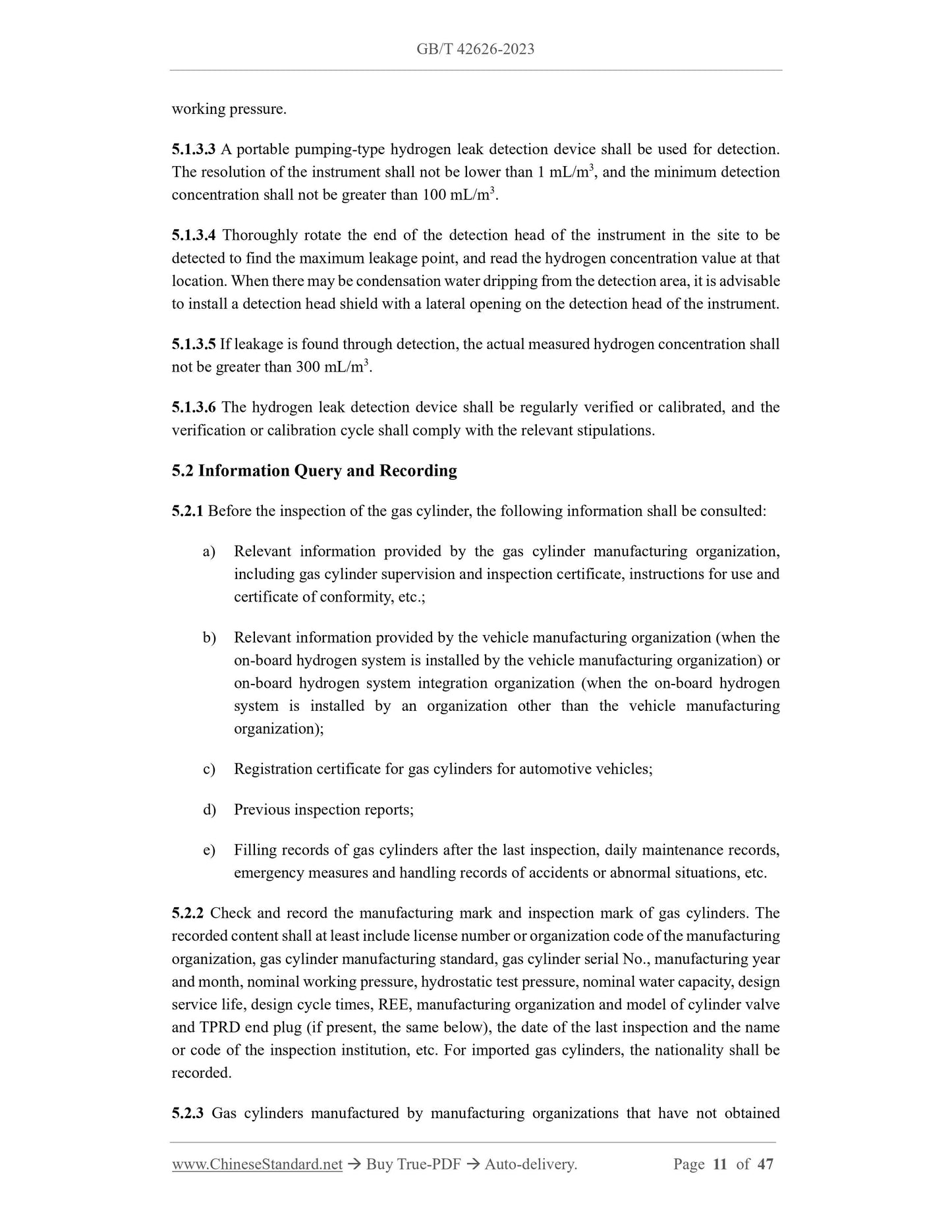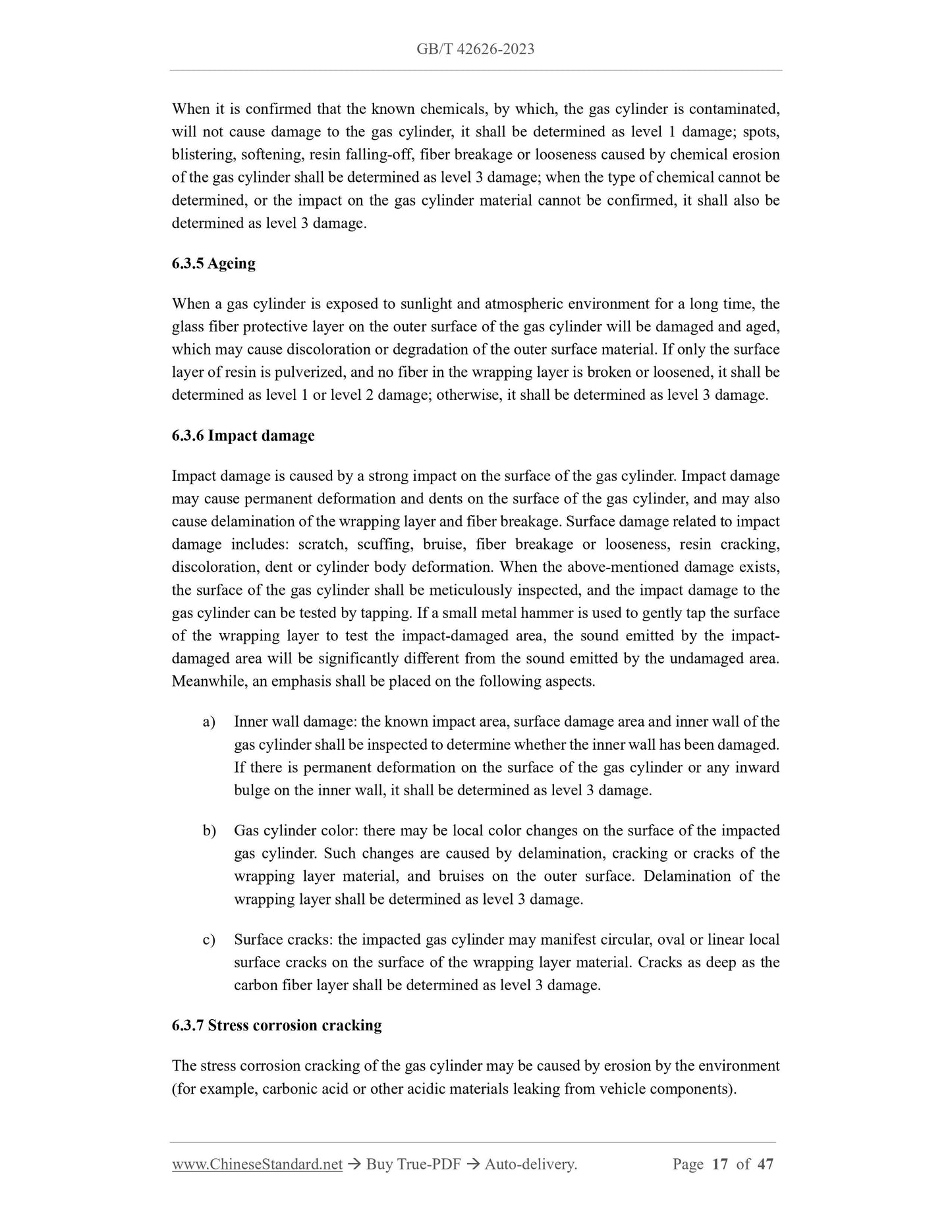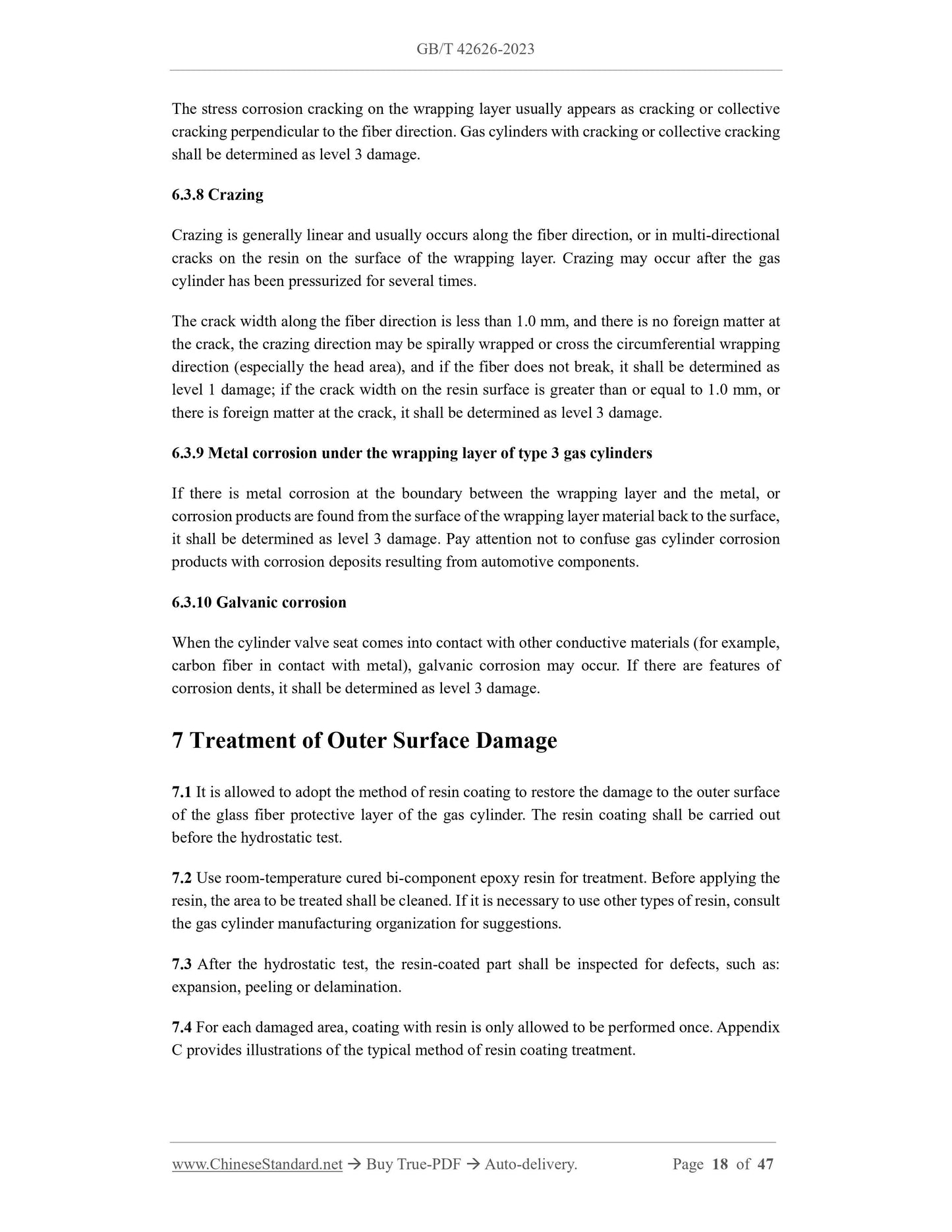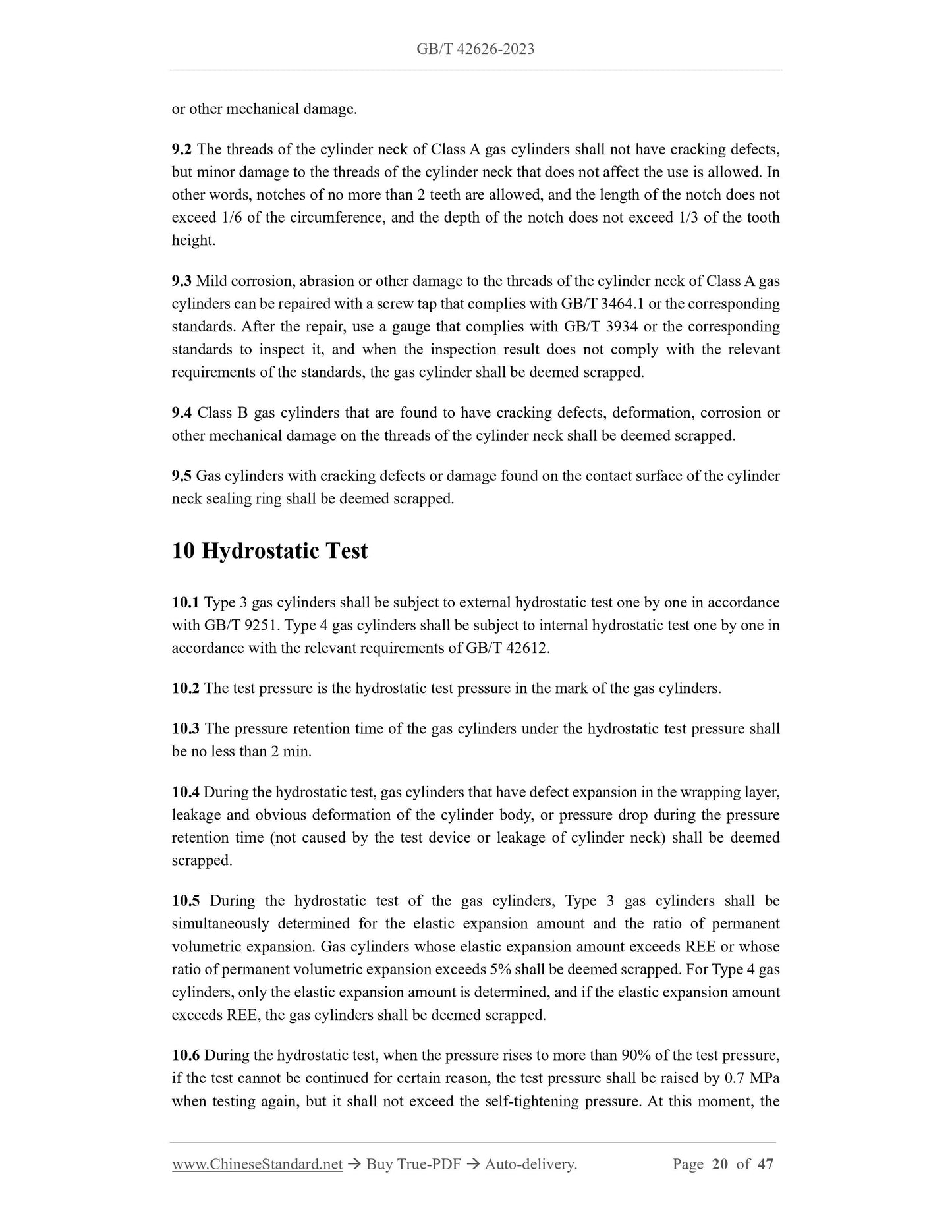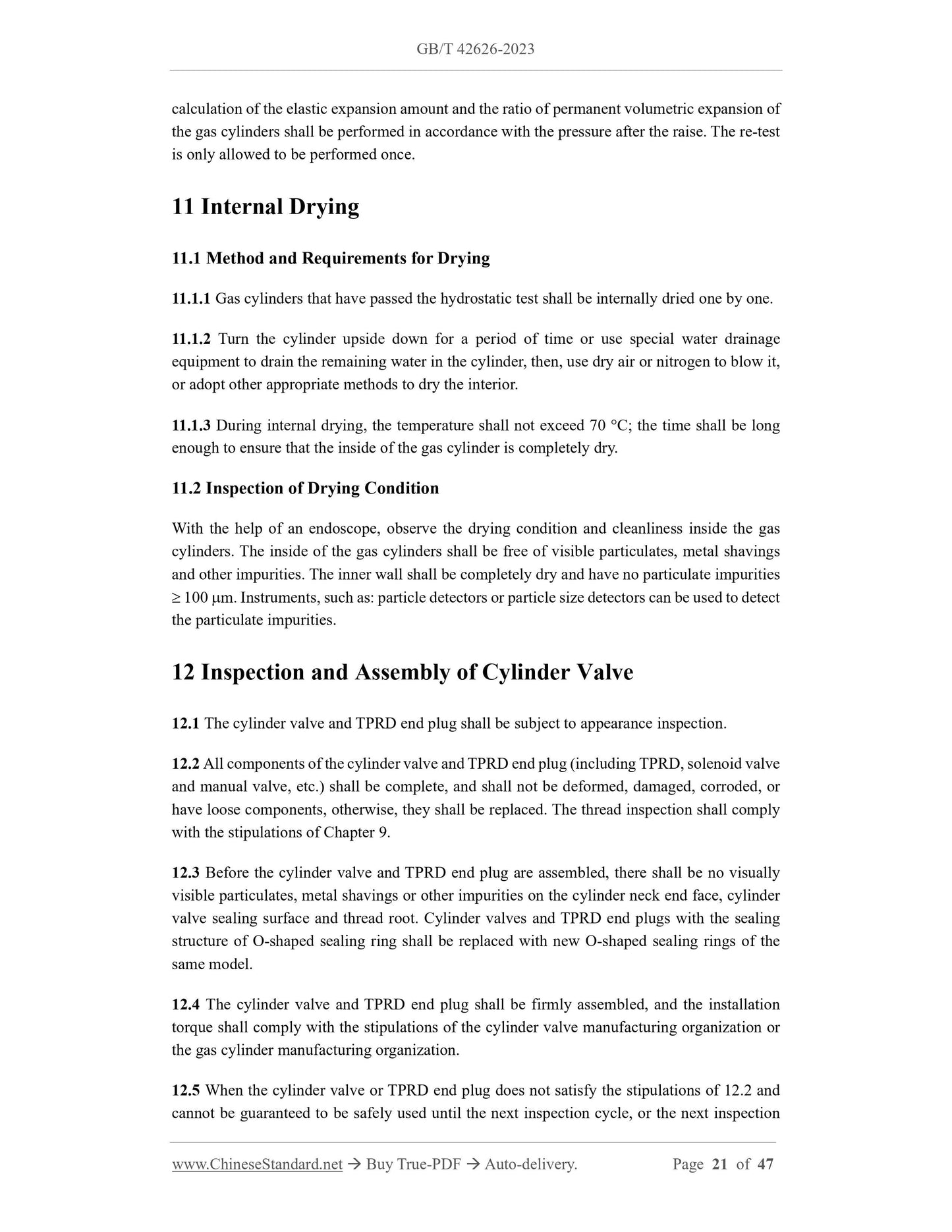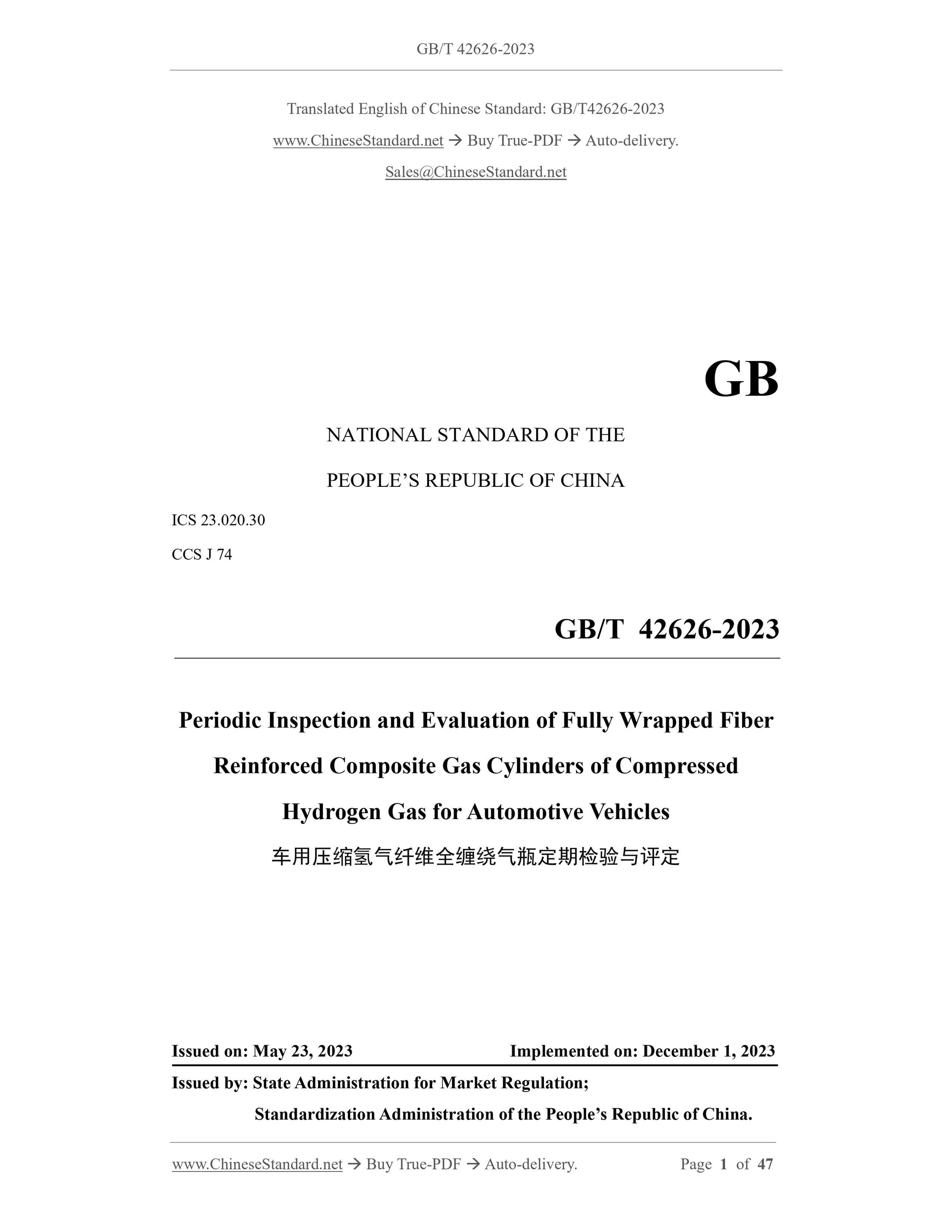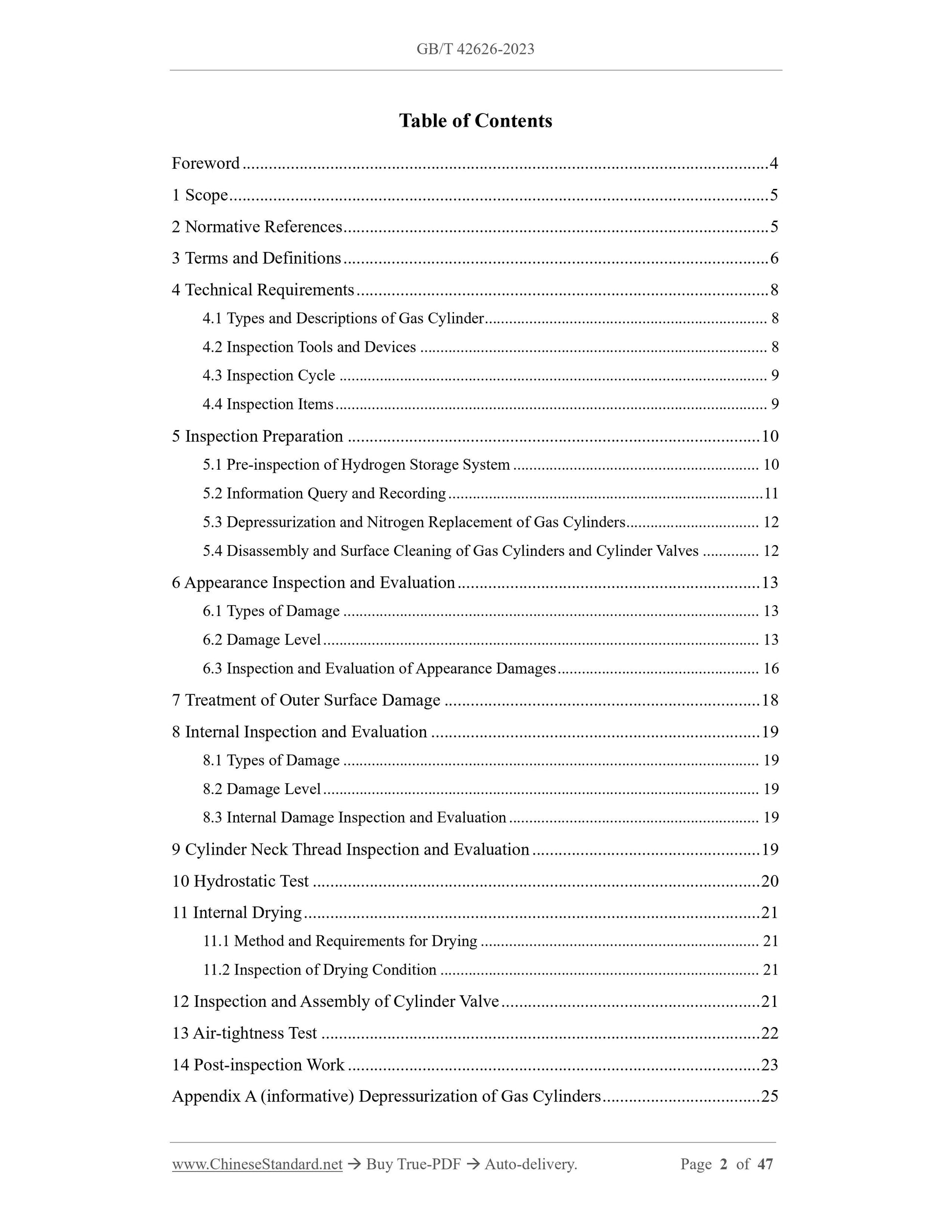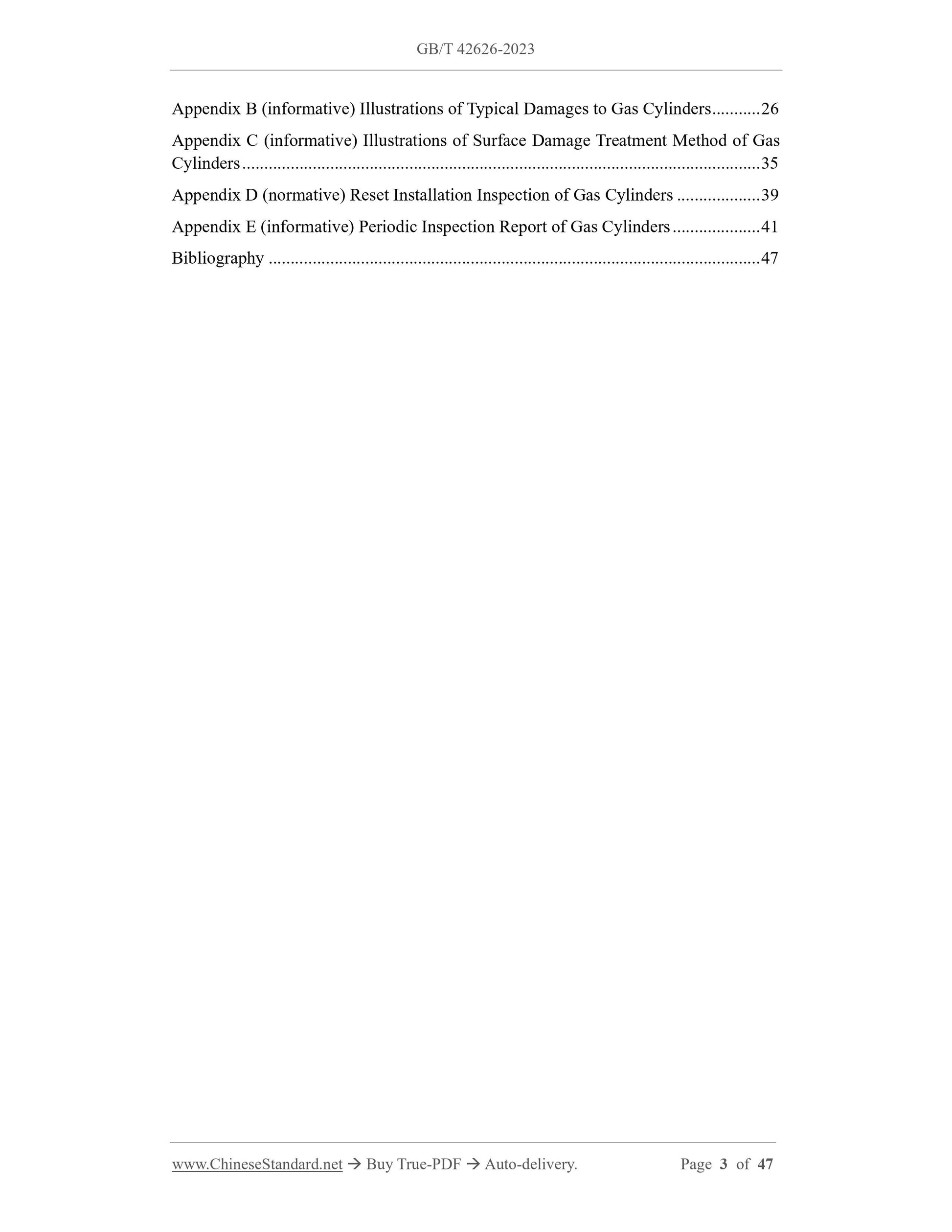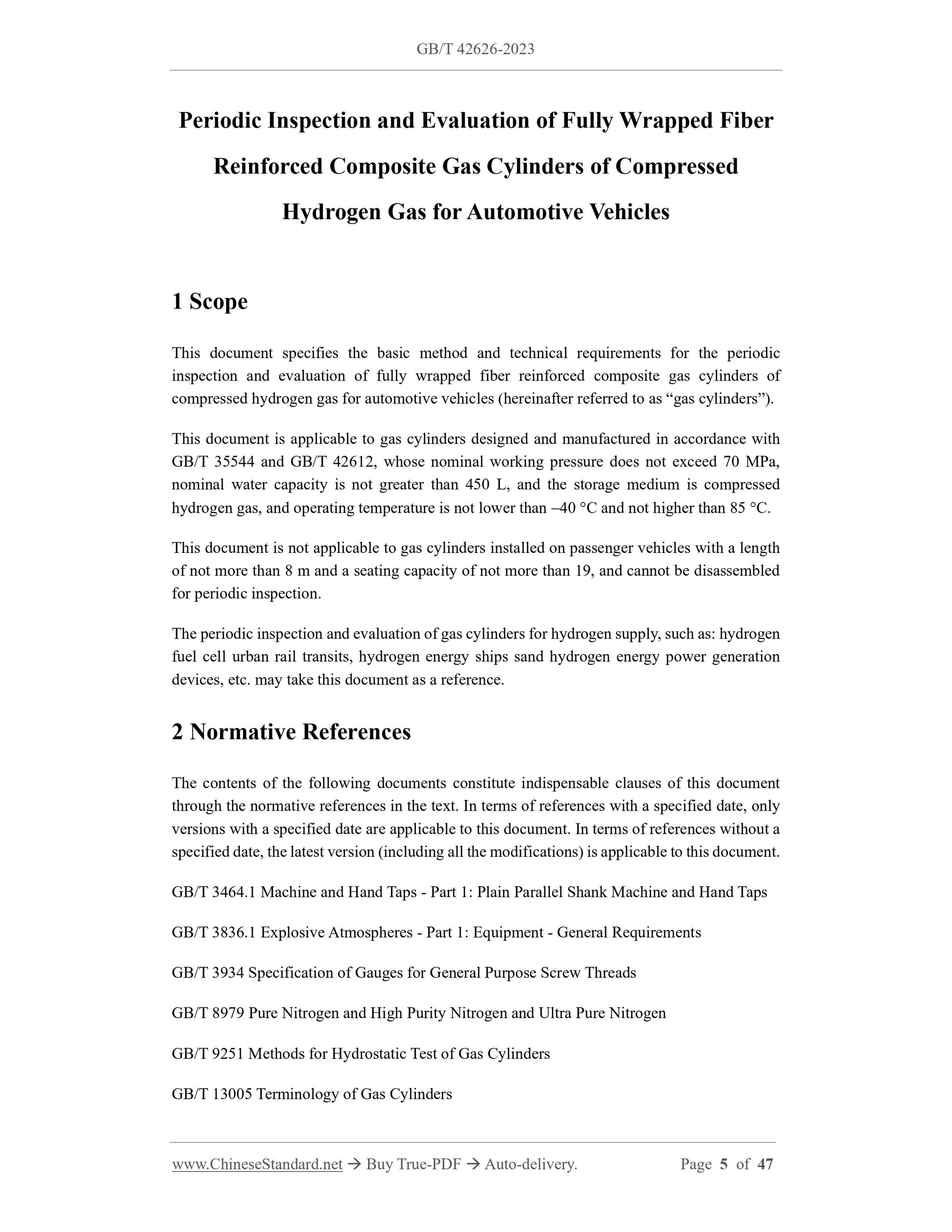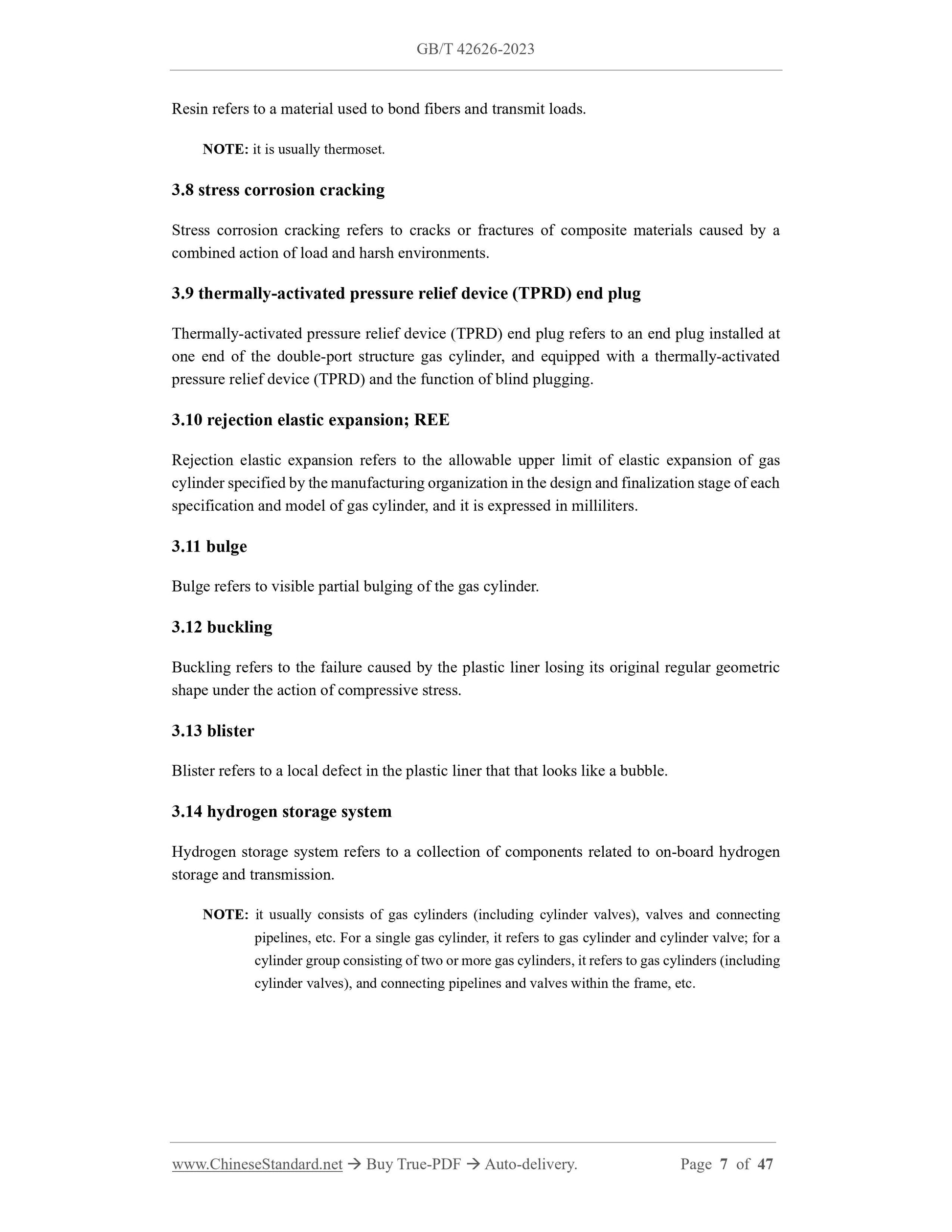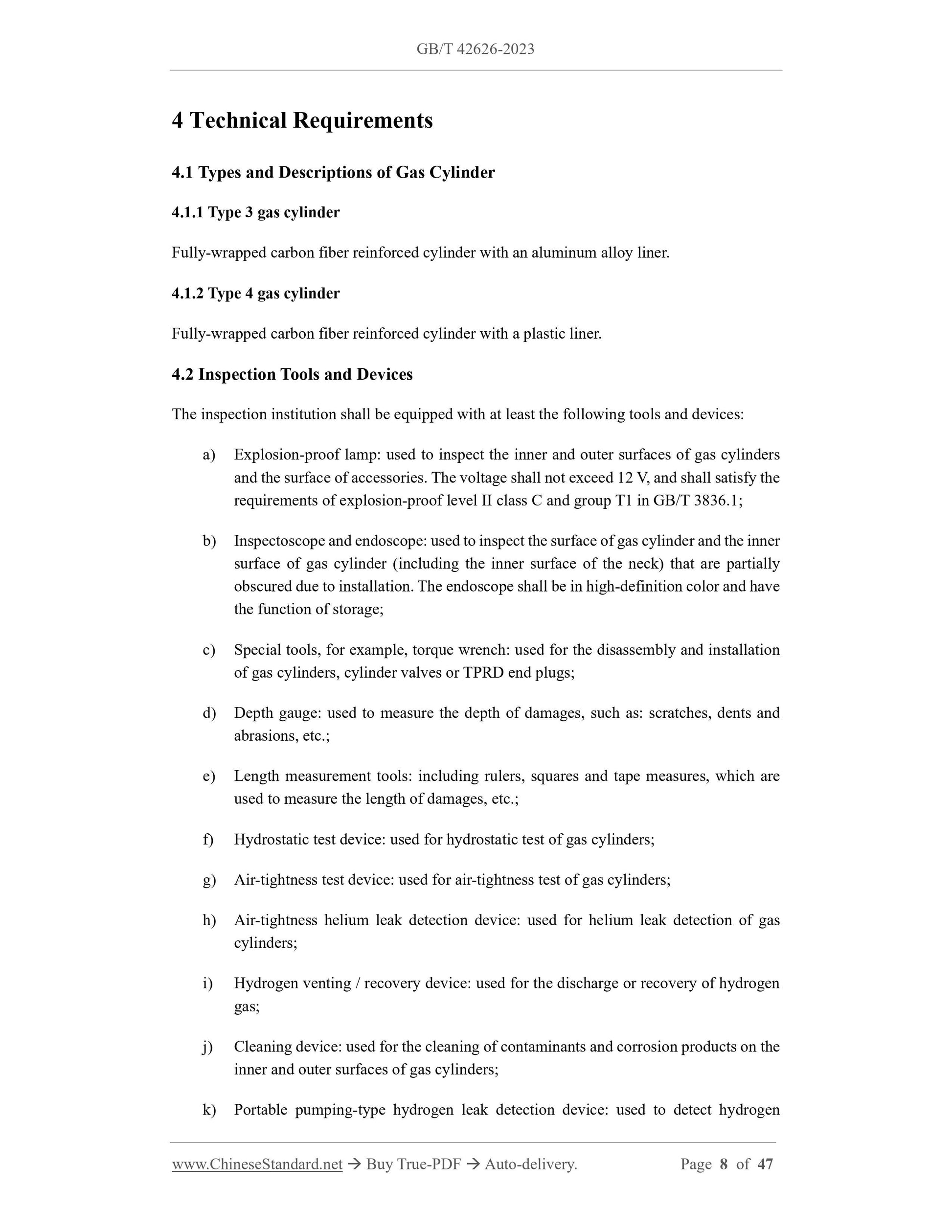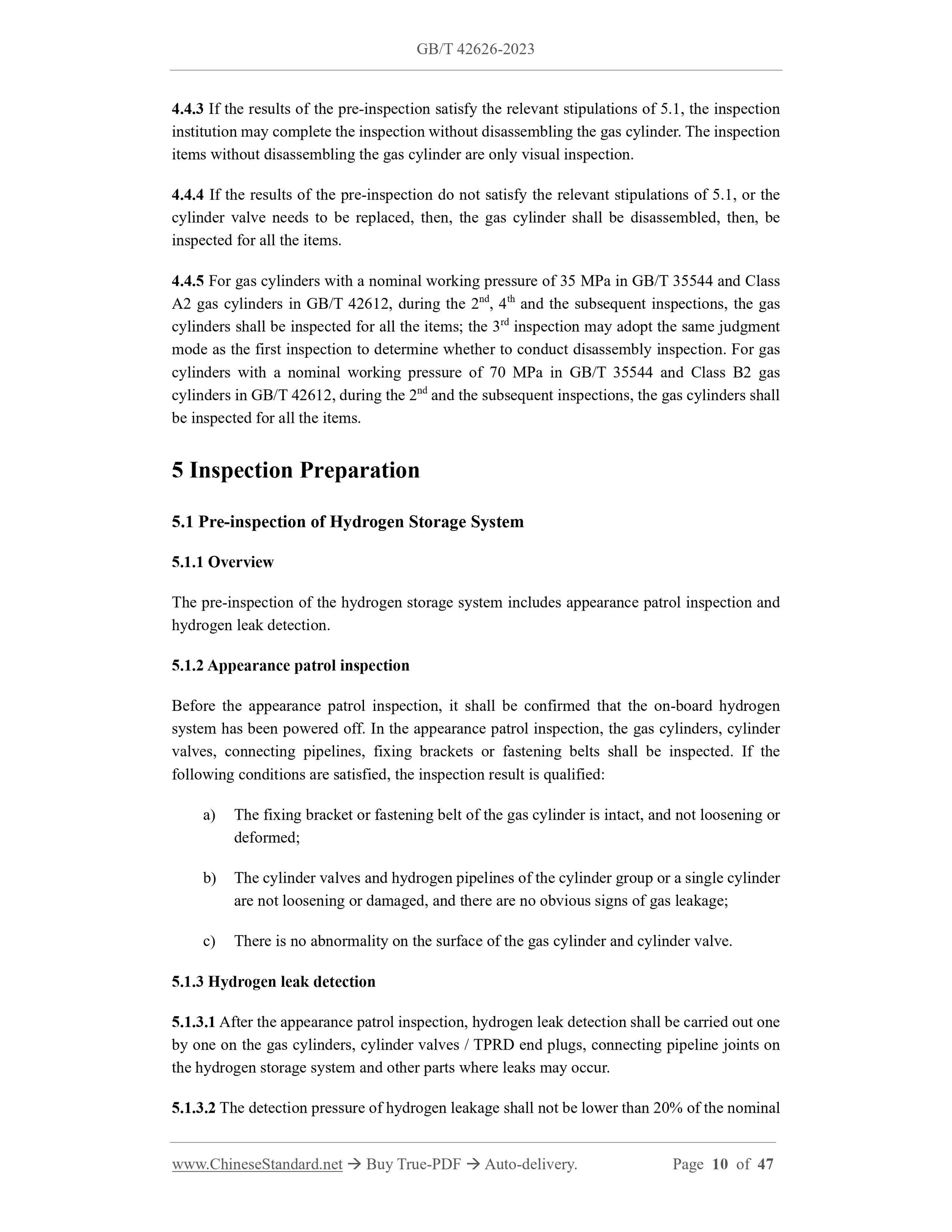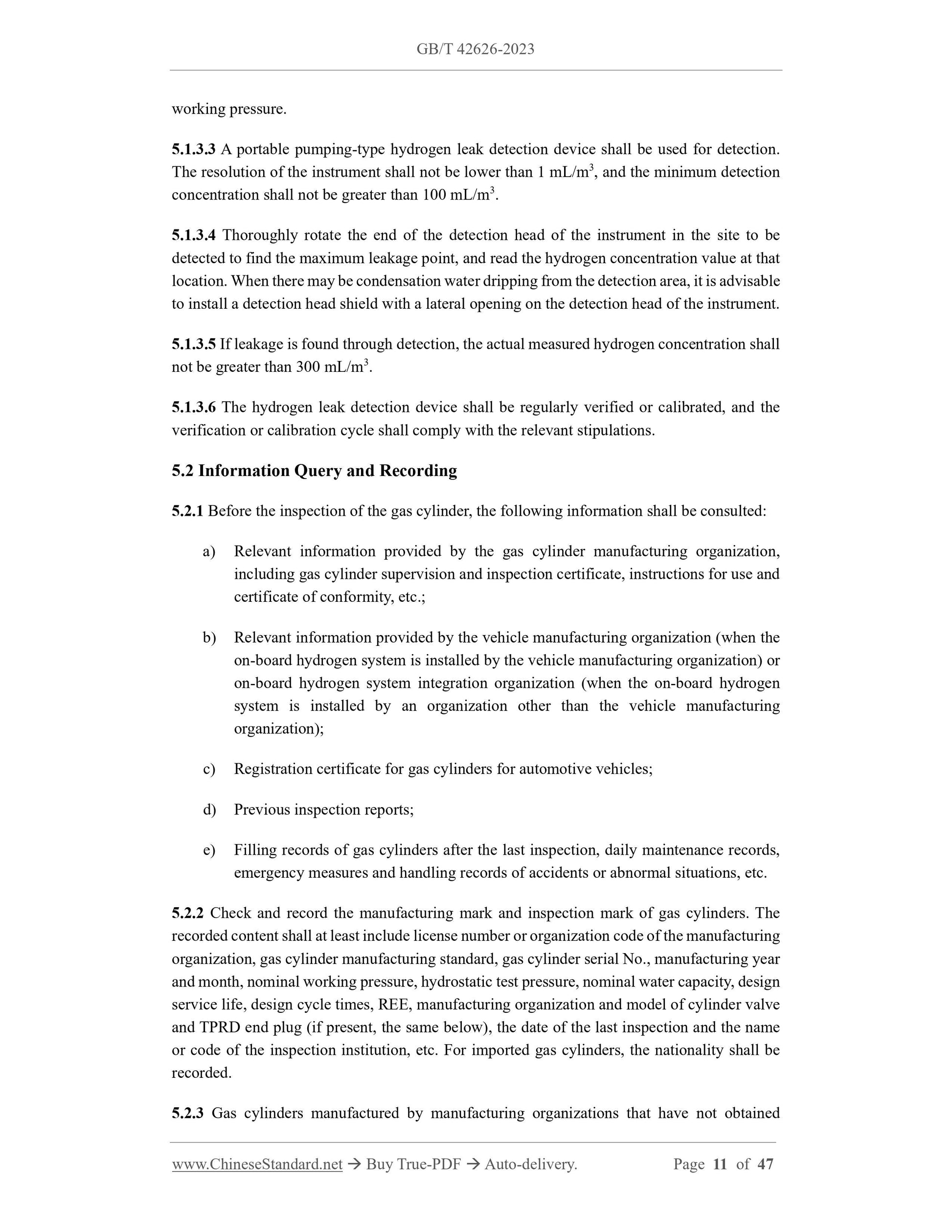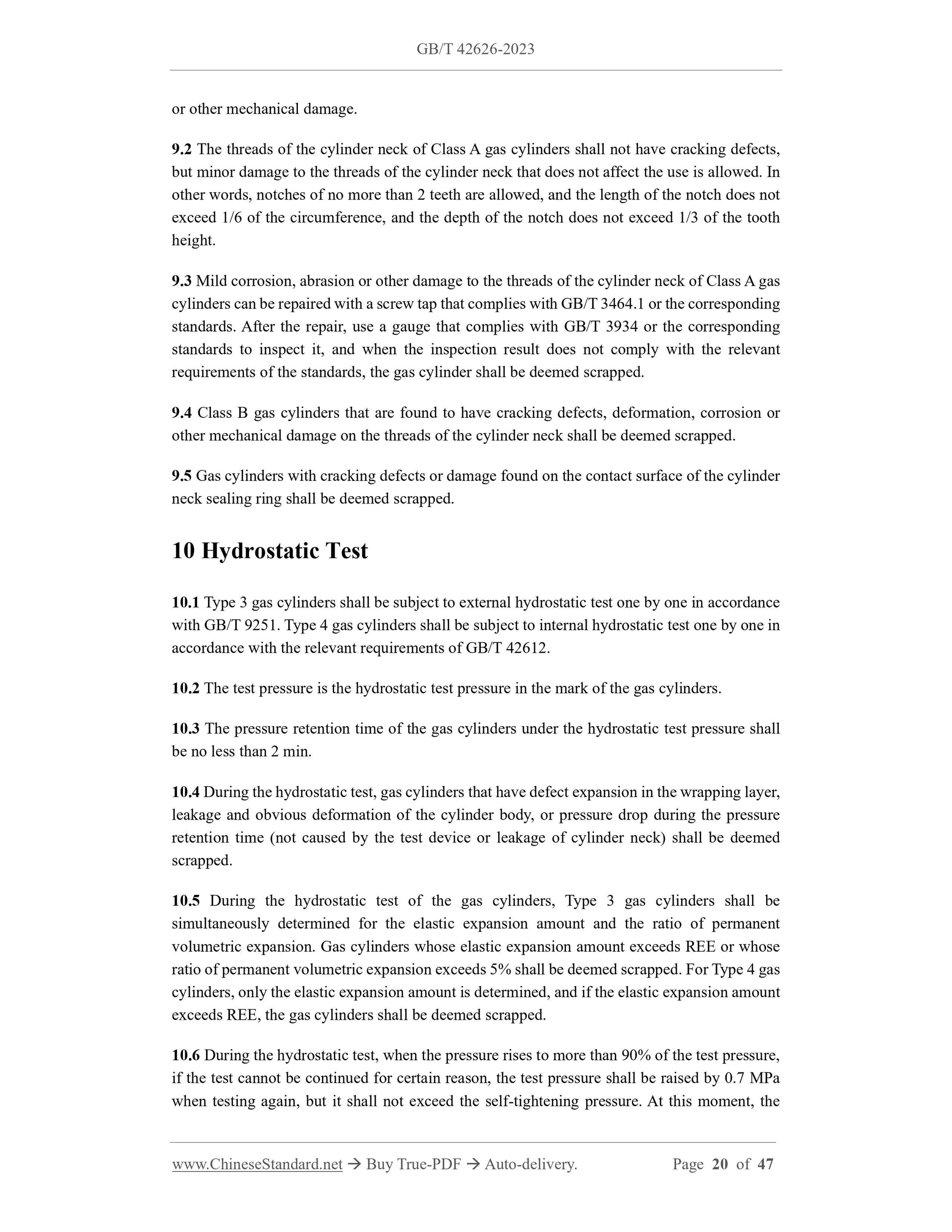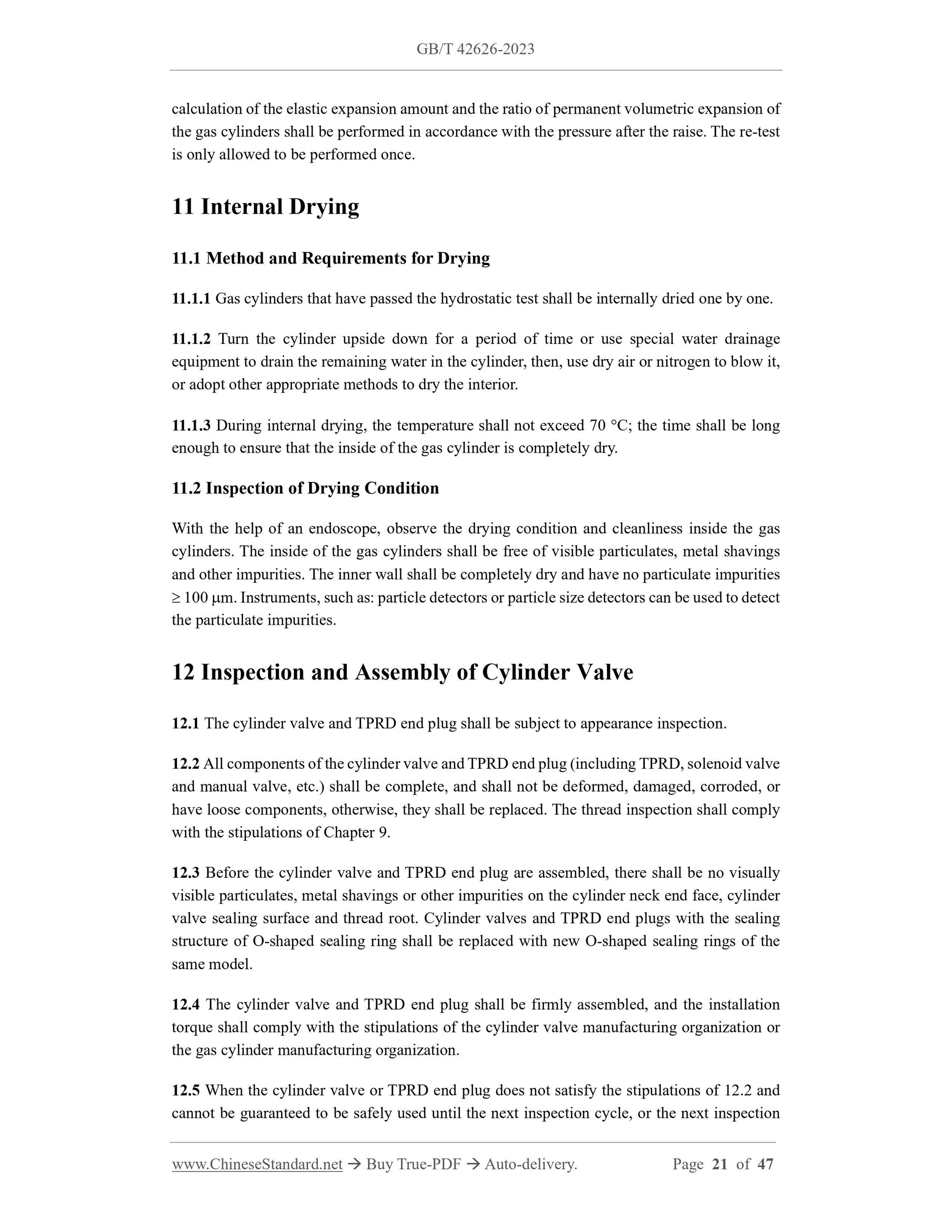1
/
of
12
www.ChineseStandard.us -- Field Test Asia Pte. Ltd.
GB/T 42626-2023 English PDF (GB/T42626-2023)
GB/T 42626-2023 English PDF (GB/T42626-2023)
Regular price
$560.00
Regular price
Sale price
$560.00
Unit price
/
per
Shipping calculated at checkout.
Couldn't load pickup availability
GB/T 42626-2023: Periodic inspection and evaluation of fully wrapped fibre reinforced composite gas cylinders of compressed hydrogen gas for automotive vehicles
Delivery: 9 seconds. Download (and Email) true-PDF + Invoice.Get Quotation: Click GB/T 42626-2023 (Self-service in 1-minute)
Newer / historical versions: GB/T 42626-2023
Preview True-PDF
Scope
This document specifies the basic method and technical requirements for the periodicinspection and evaluation of fully wrapped fiber reinforced composite gas cylinders of
compressed hydrogen gas for automotive vehicles (hereinafter referred to as “gas cylinders”).
This document is applicable to gas cylinders designed and manufactured in accordance with
GB/T 35544 and GB/T 42612, whose nominal working pressure does not exceed 70 MPa,
nominal water capacity is not greater than 450 L, and the storage medium is compressed
hydrogen gas, and operating temperature is not lower than 40 C and not higher than 85 C.
This document is not applicable to gas cylinders installed on passenger vehicles with a length
of not more than 8 m and a seating capacity of not more than 19, and cannot be disassembled
for periodic inspection.
The periodic inspection and evaluation of gas cylinders for hydrogen supply, such as: hydrogen
fuel cell urban rail transits, hydrogen energy ships sand hydrogen energy power generation
devices, etc. may take this document as a reference.
Basic Data
| Standard ID | GB/T 42626-2023 (GB/T42626-2023) |
| Description (Translated English) | Periodic inspection and evaluation of fully wrapped fibre reinforced composite gas cylinders of compressed hydrogen gas for automotive vehicles |
| Sector / Industry | National Standard (Recommended) |
| Classification of Chinese Standard | J74 |
| Classification of International Standard | 23.020.30 |
| Word Count Estimation | 34,379 |
| Date of Issue | 2023-05-23 |
| Date of Implementation | 2023-12-01 |
| Issuing agency(ies) | State Administration for Market Regulation, China National Standardization Administration |
Share


